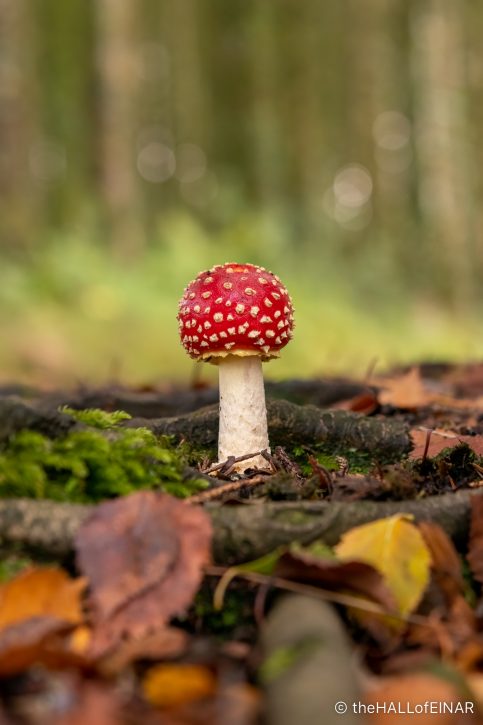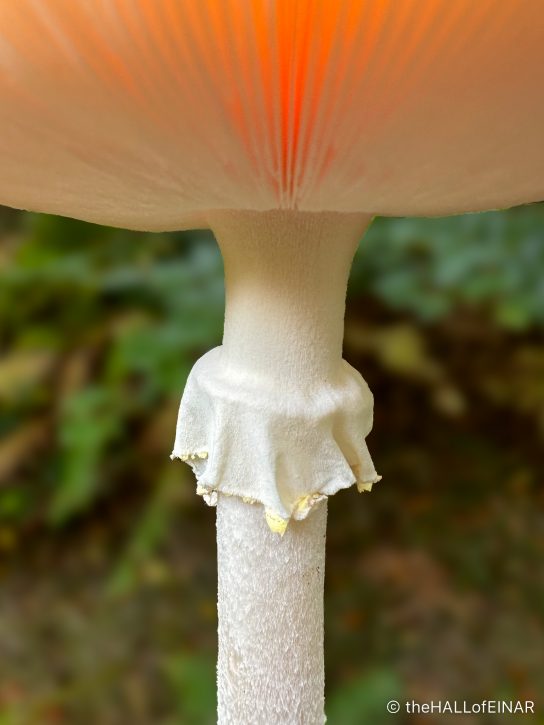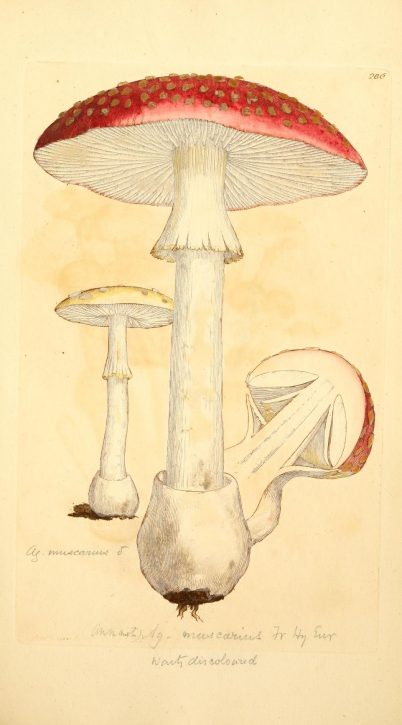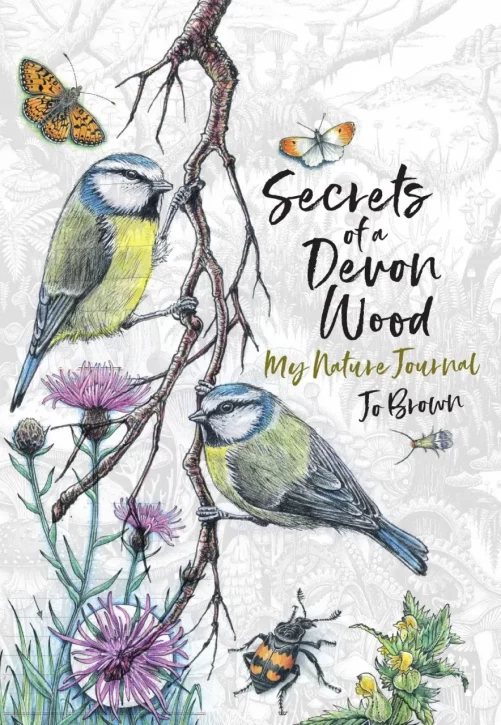Fly Agarics and the Board of Agriculture
Here’s one of my recent purchases, Edible and Poisonous Fungi.
What’s this? Bulletin No.23? The Ministry of Agriculture & Fisheries? Published by His Majesty’s Stationery Office? Five Shillings Net? It was originally published in 1910 but I have the 1947 edition. Perhaps people were so hungry in 1947 that the Government had to intervene and guide people to stop mass poisonings from desperately hungry foragers? Even bread was rationed in 1946, despite never being rationed during the Second World War.

Here’s what the book says:
As far back as 1910 the Ministry (then Board) of Agriculture, in order to assist the public to distinguish some of the more common kinds of edible and poisonous fungi, published a booklet containing 25 coloured plates, with descriptions of the species depicted.
There was a steady and continued demand for this work, and up to 1940 five editions and one reprint had been required. In the later editions new plates were substituted for some of the old ones which were not up to modern standards. The stock of the last edition of this Bulletin having been destroyed by enemy action, it has now been decided to publish a sixth completely revised edition.
The lifelike illustrations are all from paintings by Miss E. M. Wakefield, the distinguished Mycologist at the Royal Botanic Gardens, Kew. The text also has been revised and rewritten by Miss Wakefield, additional matter being incorporated which should make the Bulletin more generally useful.
It was republished because the last edition was, “Destroyed by enemy action”. Amazing.
I’m interested in the culture of Britain and its relationship with mushrooms and toadstools As someone who horrified my parents when I was age 12 by bringing Morels home, and cooking them in plenty of butter and tucking into them on toast in our tiny terrace, the changing fashions and knowledge about fungi here are fascinating.
The book starts with pages on the edible species and follows with the poisonous ones. Here’s the Fly Agaric, Amanita muscaria:
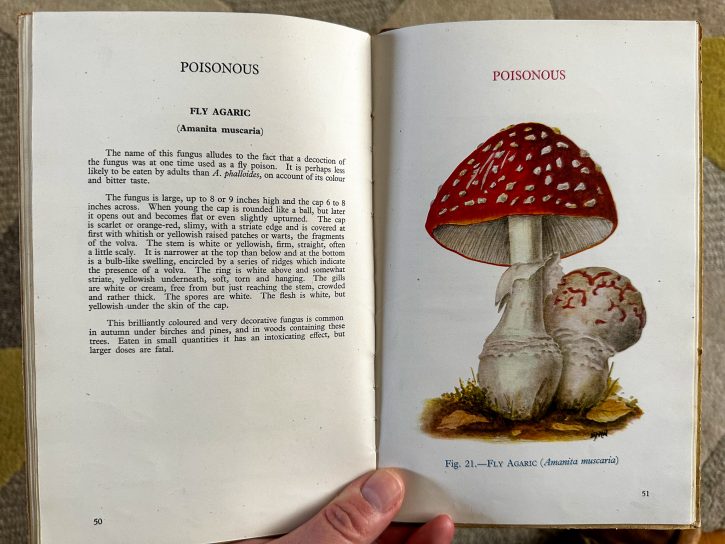
The name of this fungus alludes to the fact that a decoction of the fungus was at one time used as a fly poison.
Okay, multiple points for the word decoction, which is so rarely used nowadays. It means using a liquid to extract compounds from plants. In this case, milk and a fungus, not a plant. Peel the cap, dip it in milk, leave it out for the flies and they’ll take a taste and die.
It is perhaps less likely to be eaten by adults than A. phalloides, on account of its colour and bitter taste.
A. phalloides is Amanita phalloides, known as the Death Cap, its close relative, which is tasty and deadly. If you do live, you’re likely to need organ replacement.
The fungus is large, up to 8 or 9 inches high and the cap 6 to 8 inches across. When young the cap is rounded like a ball, but later it opens out and becomes flat or even slightly upturned.
The cap is scarlet or orange-red, slimy, with a striate edge and is covered at first with whitish or yellowish raised patches or warts, the fragments of the volva.
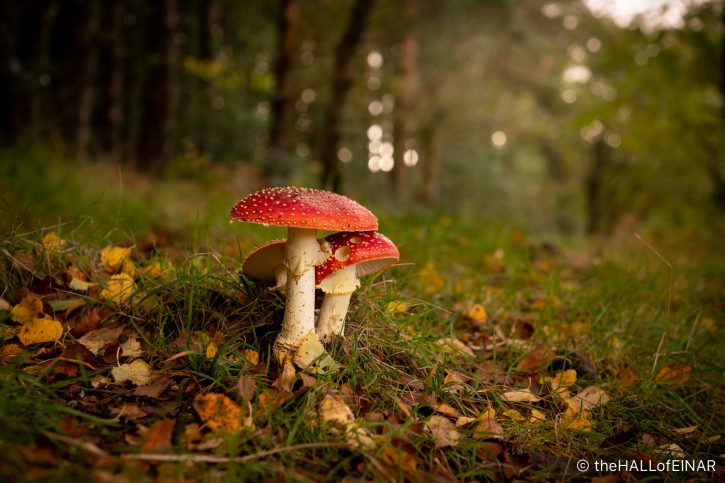
The stem is white or yellowish, firm, straight, often a little scaly.
It is narrower at the top than below and at the bottom is a bulb-like swelling, encircled by a series of ridges which indicate the presence of a volva. The ring is white above and somewhat striate, yellowish underneath, soft, torn and hanging.
The gills are white or cream, free from but just reaching the stem, crowded and rather thick. The spores are white. The flesh is white, but yellowish under the skin of the cap.
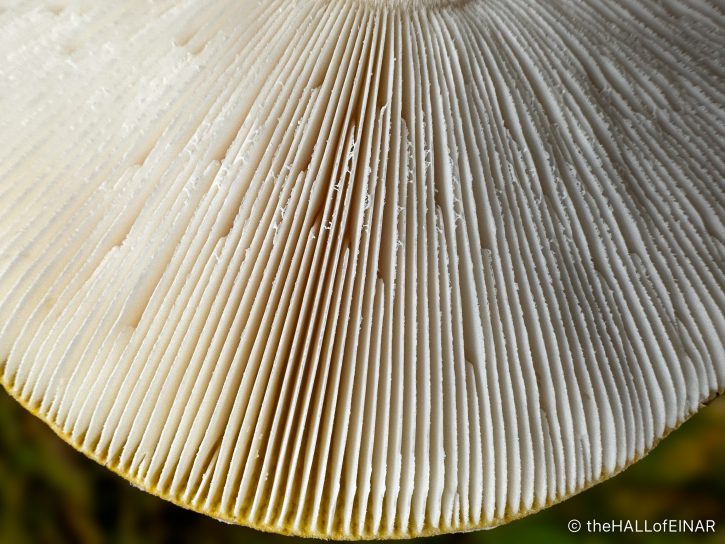
This brilliantly coloured and very decorative fungus is common in autumn under birches and pines, and in woods containing these trees. Eaten in small quantities it has an intoxicating effect, but larger doses are fatal.

That’s still a great description. Thank you Miss E. M. Wakefield.
Here’s one about to emerge. Lovely, aren’t they?

I wonder if the Department for Environment, Food & Rural Affairs sees one of its duties as providing people with guidance on edible and poisonous mushrooms in 2022? Given the levels of food poverty, maybe they should.
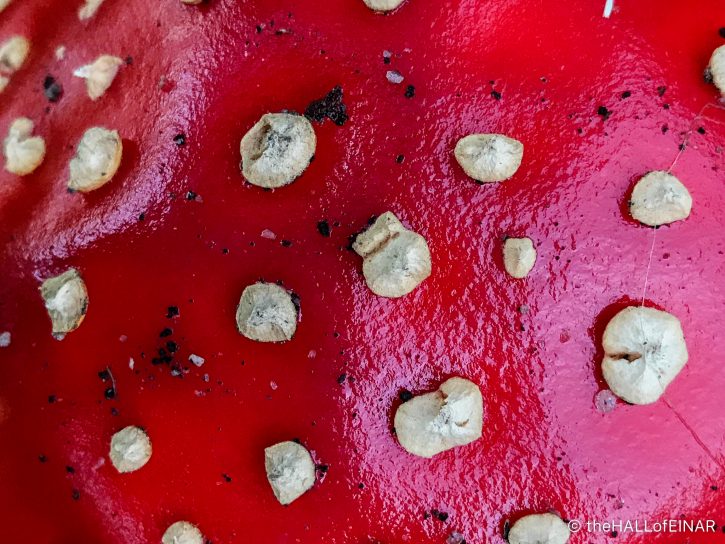
Here’s Amanita muscaria from James Sowerby’s Coloured Figures of English Fungi or Mushrooms published in MDCCXCVII, or 1797, if that’s easier to understand:
And here’s my favourite modern illustration of a Fly Agaric, from Secrets of a Devon Wood by illustrator Jo Brown:
Hopefully, stocks won’t be destroyed by enemy action.
And here’s a limited edition print by Jo of a Fly Agaric making a wild fibonacci spiral:
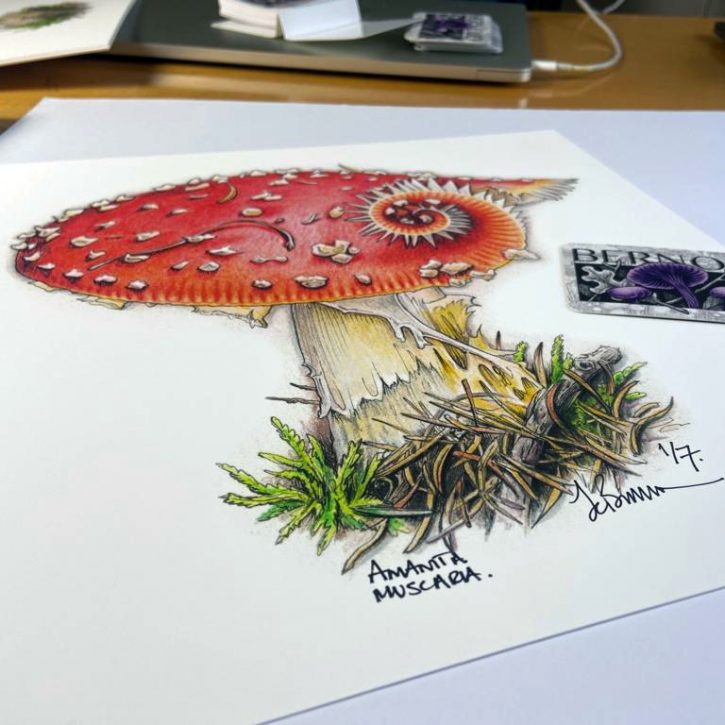
Lovely. (available here)

